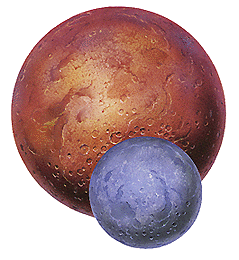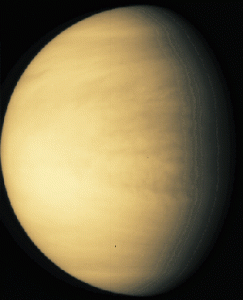Pluto Size
In terms of surface area, the size of Pluto is 1. 665 × 107 km2. The mean radius is 1,153 km or about 0.18 Earths. The volume is 6.39 × 109 km3.
665 × 107 km2. The mean radius is 1,153 km or about 0.18 Earths. The volume is 6.39 × 109 km3.
Physical Characteristics of Pluto
The sidereal rotation is −6.387 230 day. That is equal to 6 days, 9 hours, 17 minutes and 36 seconds. The surface atmosphere is 0.30 Pa. It is comprised of metha and nitrogen.
Orbital Properties
Pluto’s perihelion is 4,436,824,613 km or 29.658 340 67 AU. The aphelion is 7,375,927,931 km or 49.305 032 87 AU. The orbital period is 90,613.305 days (248.09 years). The average orbital speed is 4.666 km/s. The synodic period is 366.73 days.
General Overview
The size of Pluto makes it the second biggest dwarf planet currently in the Solar System. Known formally as 134340 Pluto, it is the 10th biggest body that goes around the Sun. Although it was originally deemed as a planet at its discovery in 1930, it was reassigned as a dwarf planet in the Kepler belt in 2006.
The distance of Pluto from the Earth makes examination of the planet difficult. The planet can be seen only with a telescope. Most of the images of Pluto today come from the Hubble Space Telescope. What the images show is a planet with varied features.
These variations have been shown to extend by hundreds of kilometers. Aside from showing the size of Pluto, the maps indicate the planet has numerous bright spots and polar regions.
Based on available information, the planet’s surface has orange, white and black hues. Based on the available data, the southern hemisphere has assumed a dark color.
The northern polar sector now has a brighter color. The planet has also begun to redden. The theory is that the seasonal changes in the planet are responsible for it.
Based on spectroscopic analysis, the surface is made up of 98% nitrogen ice. Carbon monoxide and methane are also present.
Reclassification
Pluto was demoted to a dwarf planet following the 2006 IAU resolution. The declaration stated that a planet must orbit the Sun and be a sphere through its gravitational force. It must also clear the neighborhood at the orbit. Because Pluto could not meet the third standard, it was relegated to a dwarf planet.
The Satellites of Pluto
The planet has three satellites: Charon, Hydra and Nix. Charon was discovered in 1978, while Hydra and Nix were detected in 2005. The moons orbit very close to Pluto. Unlike other planetary systems, Charon and Pluto are locked.
Charon always shows the same surface to Pluto, and vice versa. In terms of prograde, the two are virtually identical. The available data suggests that Hydra is brighter than Nix.
More than the size of Pluto, it is the distance that is making exploration hard. However, after several years, the US government granted funding for a new exploration of Pluto.
New Horizons was launched on 2006 and will reach Pluto in 2015. When the New Horizons craft gets there, more information about the planet will be learned.





